Schools across Indiana are back in session. In spite of the COVID Delta Variant causing so much upheaval, once the school day starts, there’s a familiar energy that’s combating the continued burden we’re all sharing. That energy is explicitly about teaching and learning transpiring in classrooms once again. And it comes with new values and reminders gleaned from the prior two disrupted school years. The current school year marks the third consecutive one to take into consideration the need for districts to continue rewriting their strategic plans and considering what changes need to be made to account for new modes of instruction and more efficient operations to protect margins for all resources: time, energy, and money. Not to mention human resources, most often measured in morale.
We continue talking about the edtech hidden gems for Indiana schools, hovering near the foundation for this post where morale gets challenged by near-ubiquitous frustrations around the district’s student information system or SIS. Those frustrations with the SIS may appear across roles even beyond school staff and surface on the homefront more so in the current climate.
When I left district life to work for Alma, I joked with leaders that I never aspired to represent an SIS when I was a teenager sitting across from my high school guidance counselor. And when I decided to become a teacher and went through the training of our SIS, I couldn’t help but think it could be better. I became aware that state reporting was the most important factor for administrators, and for teachers the SIS was mostly important for taking attendance, maintaining a gradebook, and looking up a parent’s phone number or email address (which they’d copy to their own personal address book).
Since that introduction to edtech—especially the enterprise-grade systems at the bottom of the stack feeding rosters and schedules to other tools—I’ve concluded that more often than not, our fellow practitioners have been given a hatchet when they need a scalpel.
More than ever, our efficacy as educators to make data-driven decision-making is contingent upon the precision of our data and how it’s organized and presented.
I started to compare systems, and when I saw a demo for Alma while running the Global Campus at Center Grove, I had to share the news that a new SIS had changed the space. I tendered my resignation and started a five-year run with Alma and am still a fan though no longer employed by the company.
Since the pandemic, I’ve thought how so many Indiana schools would benefit from the incredibly thoughtful design that is immediately apparent when you login to Alma. And they’ve continued innovating throughout the upheaval of learning from home to the present with new features we’ll cover momentarily.
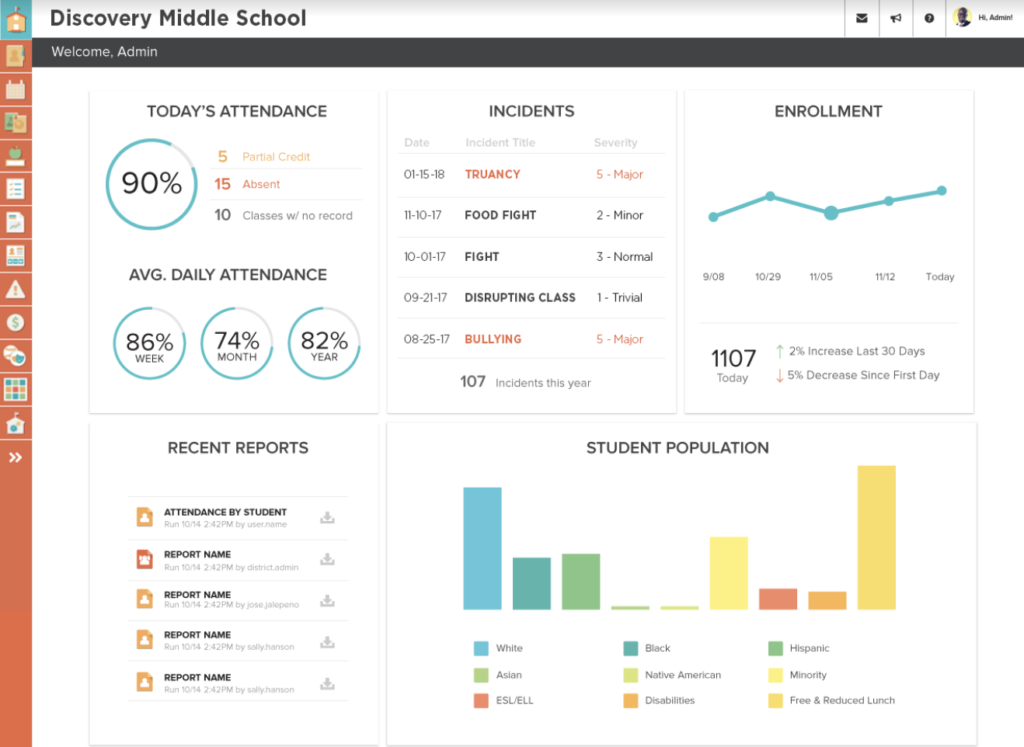
From the sequence of screens to how each has a deliberate color palette, an educator can take action regardless of role or task in a given moment. By its nature, the user interface facilitates decision-making for administrators, teachers, parents, and students alike, if you grant them access. To that end, Alma’s roles and permissions are so easy to manage that giving appropriate access to each role in the learning community without compromising privacy laws and regulations is a straightforward task.
But first, I want to address some Switching SIS objections I’ve witnessed over the years:
Switching SIS Objections:
We can’t change the SIS.
Firstly, who’s the “we” in this objection? Secondly, are you trapped? And if so, by a contract with the vendor or your data coordinator’s allegiance? For an SIS, Indiana doesn’t have a statewide contract with the biggest vendors in the SIS space like North Carolina, Kentucky, or Wisconsin. And for all the pragmatic reasons for an SEA to make such a decision, their choices are unanimously in favor of the largest edtech companies in the market.
The quality of an SIS (or any edtech product, for that matter) is not measured by the size of the company. They don’t become monoliths by innovating. They do so by being shrewd with the product roadmap and creating dependencies on expensive training and fortifying the sunk cost fallacy. That’s what makes an SIS vendor the New York Yankees of edtech. However, for those who work in data management beyond our sector, decisions to go with a younger company are logical when presented with an offering based on newer foundational technology and less legacy cruft in their codebase.
Data interoperability is what those outside our sector understand. Does the platform hold data in a standardized format? If so, you are not trapped. Your data is not held hostage. And with the right technical assistance, you can migrate your data safely and securely from one platform to another that will serve your users with a better UI/UX that reduces time spent and improves outcomes aligned to your district’s strategic plan. And like mentioned before in this series, a good foundation with such systems like your SIS, properly integrated, improves the performance of everything you do in the different levels above, and sometimes with more modern solutions, can replace other tools in your edtech budget:
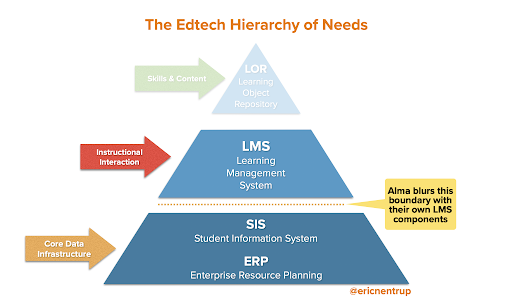
Modern schools need modern tools. It’s a boon when they can replace multiple categories of legacy tools we’ve been accustomed to in our field and Alma challenges the framework above because they have student/parent facing roles and screens for coursework. This means administrators have more options for building an edtech stack that represents their local needs with Alma at the foundation. Some users report having cut their LMS budget significantly by using Alma’s tools for the younger students instead of site licenses with a dedicated LMS for the total student account across all grade levels. Consider such an approach as this:

We can’t take risks with state reporting.
School leaders don’t change SISs more than once every five to ten years, if they ever do. It affects literally every person in the learning community, whether staff or student household. And though decision-makers aren’t typically users of the SIS on a regular basis, they feel they can’t afford the risk of compromising the integrity of their state reporting since annual daily membership funding (ADM) is inextricably tied to those reports. That’s the real issue—the burden of accountability to state and federal authorities. So teachers and other staff make do and grow accustomed to the SIS they have.
Change is hard.
Some realize the cost they don’t want to assume is the investment of resources (specifically, time) in migrating to a new system and getting everyone trained to use it properly. I’ve even heard an administrator say, “our teachers don’t like change.” I let that hang in the air before repeating it back to him. No human likes change until the pain of change is outweighed by the pain of staying the same, which may be the wisest thing Tony Robbins ever said. However, as educators, we’re purveyors of change…continuous improvement…redesign.
So, enough inside baseball. Alma has solved that with their new feature, Alma Navigator. Let’s talk about that and other distinguishing features.
What sets Alma apart from the competition.
Once a district chooses any tool, onboarding is the uphill climb. All users have to reorient once data is migrated and contend with the anxiety of trusting the relationship with a new vendor. Alma’s team knows this and has such a massive body of experience feeding into this process.
Implementation
Migrating data from any system to another requires a combination of expertise in service and sophisticated tech combined into an effective workflow. Once Alma is stood up for a new district, they’re granted access to the new Alma Navigator tool, which is essentially a project management suite with data management prowess. It guides your team through the data forest, so you can see the different “data trees” for what they are. All tasks for migrating student data coming from the outgoing SIS and other data stores are consolidated with transparency and progress-tracking that honors the school or district’s timing, not the vendor. Clear instructions help your team work asynchronously while staying current, and Alma’s Customer Engagement team is always available with in-app chat to quell concerns and answer unique questions.
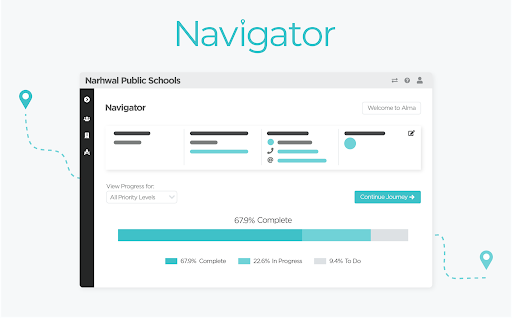
From Navigator, new users are enjoying the Alma App Center, an environment where school staff can integrate all their other tools, so rosters, demographic information, and other salient data shows up at the right place at the right time in a secure manner.
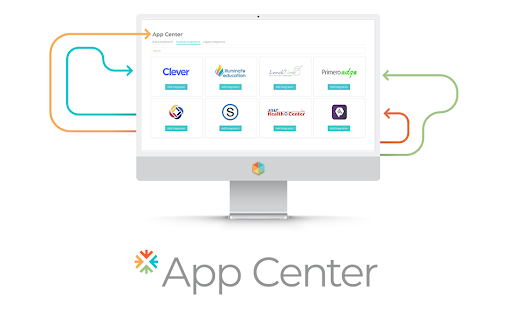
The value for in-app, customer-driven, and technically-accessible data interoperability isn’t often given a price tag. But if you consider the dozens (or hundreds) of tools used at all levels of the district, it’s considerable. Each hard-wired integration means a technician (yours, the vendors or both) must write the script to make both databases sync. Otherwise, the time expenditure comes from staff entering data twice while opening up the door for human error.
Therefore, de-risking the migration and de-stressing the work seems to be part of the design ethos from migration all the way through the next stages.
Training
Quality training for enterprise-grade software is likely as valuable as the code. It ensures all roles know how to do their jobs effectively with that tool and continue on as the school year’s needs evolve. With Alma, such training plans are customized to the district’s needs and talent.
And there are more than a few stories out there about new hires coming on board a district after training has ended and finding their way intuitively while referring to the extensive Alma Study Guide, all within the app.
Modern and equitable teaching & learning
Every time a teacher has to make a rubric for an instructional activity, it’s time that could be better spent—especially if they use a third-party tool that doesn’t integrate with the SIS/LMS. Alma supports creative and fast-paced curriculum development by building the rubric for the teacher as they choose learning targets from any source they desire.
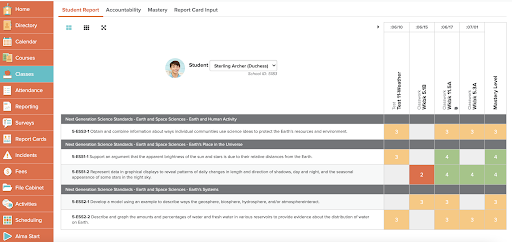
I’m not aware of a better approach for transitioning or supporting a shift from a traditional grading approach to a competency-based learning model. And I expect to see further development of Alma’s approach as demand continues to increase for more precise feedback that honors the best in learning sciences for student feedback.
Yet this isn’t the only way that Alma supports more equitable learning experiences. If you’ve ever used your browser to translate from English to Spanish or another language, Alma renders fairly well. But now they offer a Spanish localization with other languages coming. This means district leaders can be confident they’re making critical information accessible to diverse populations of ESL/ELL households.
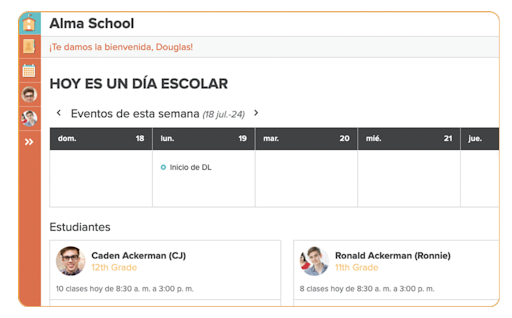
Conclusion
The newer features just scratch the surface. The product team at Alma has won countless awards for their innovation in the space and the company continues to employ former educators who also see the need for better SIS options than what’s been offered for the last 20 years. They’re an established, mission-driven company bent on continuous improvement based on user feedback and research in the learning sciences and will likely outpace the competition in the coming years.
Your SIS doesn’t have to be an albatross. You’re not going to change for several years, but when you’re due, Alma is more than worth the demo.

